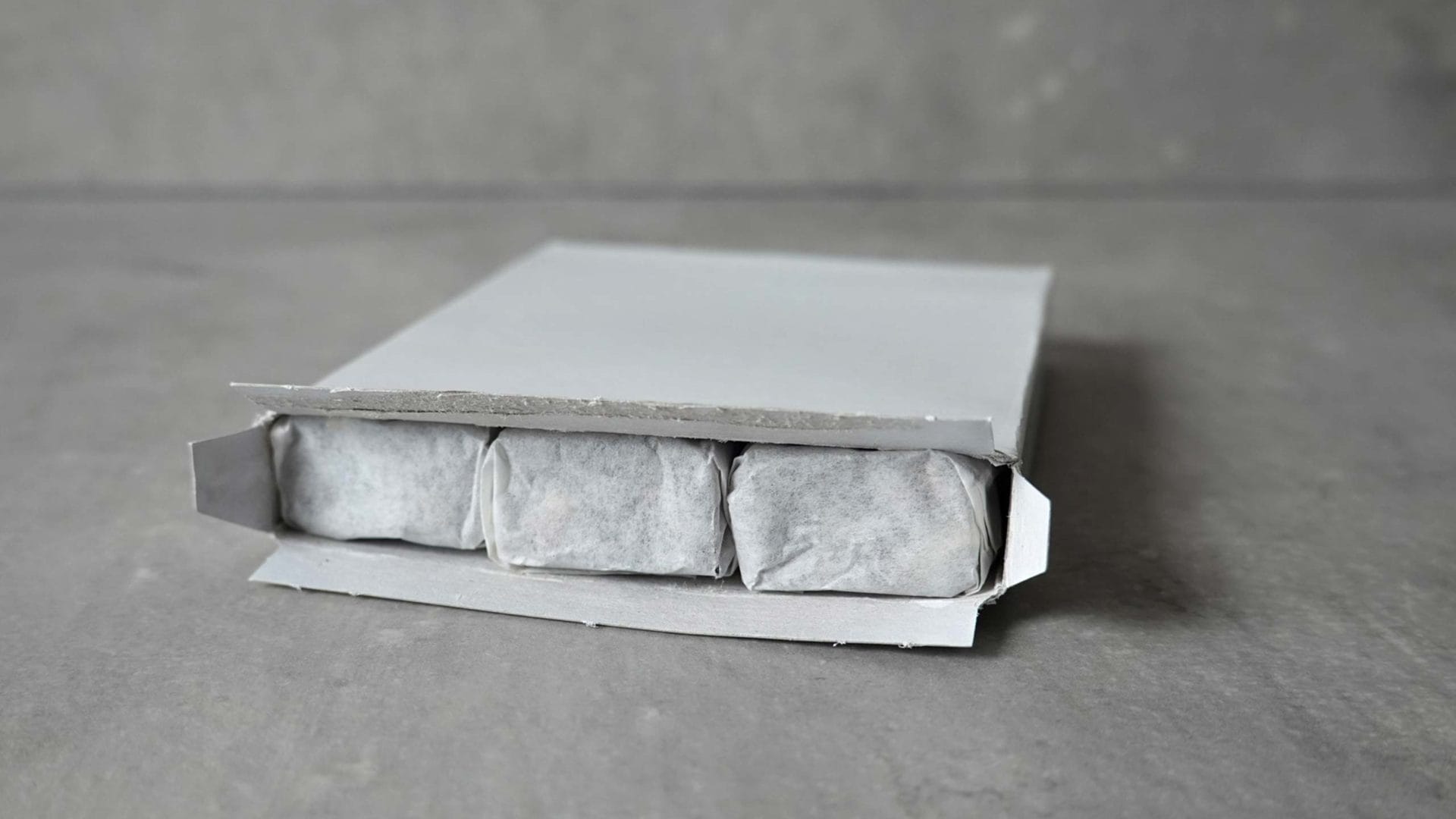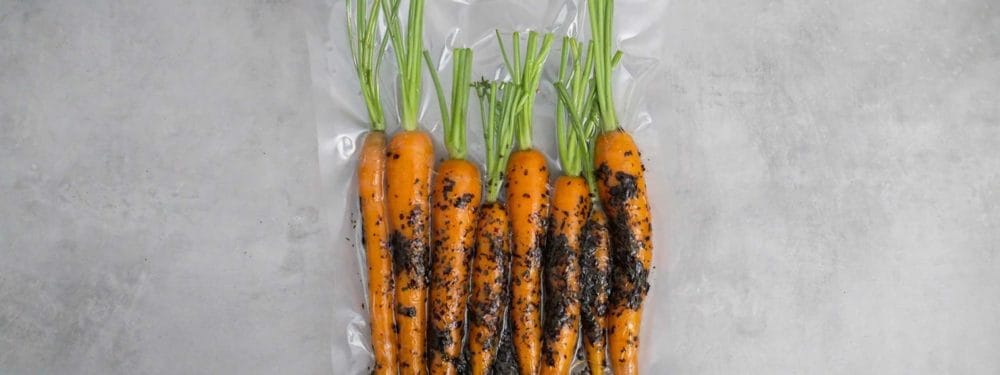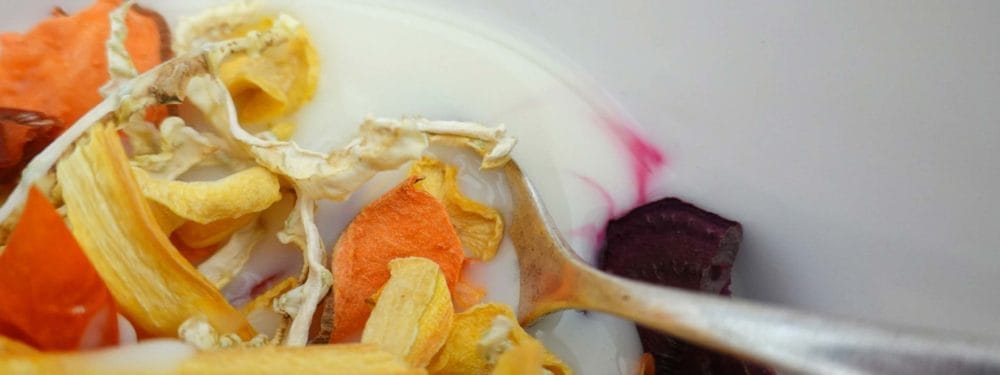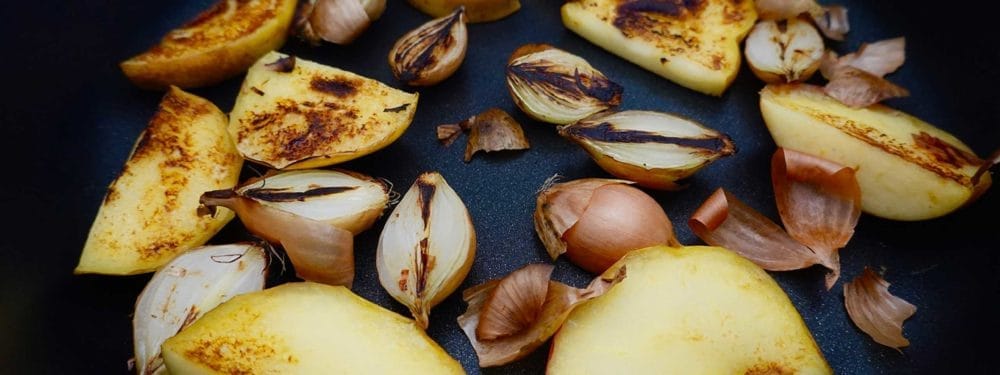Bacon Attack
Algae, along with legumes and insects, are commonly touted as the food of the future. They are available in large quantities, they are considered healthy, they are vegetable and the culinary potential has also been shown to us by Japanese cuisine – and there are also regions in Europe that have had algae on the menu for a long time.
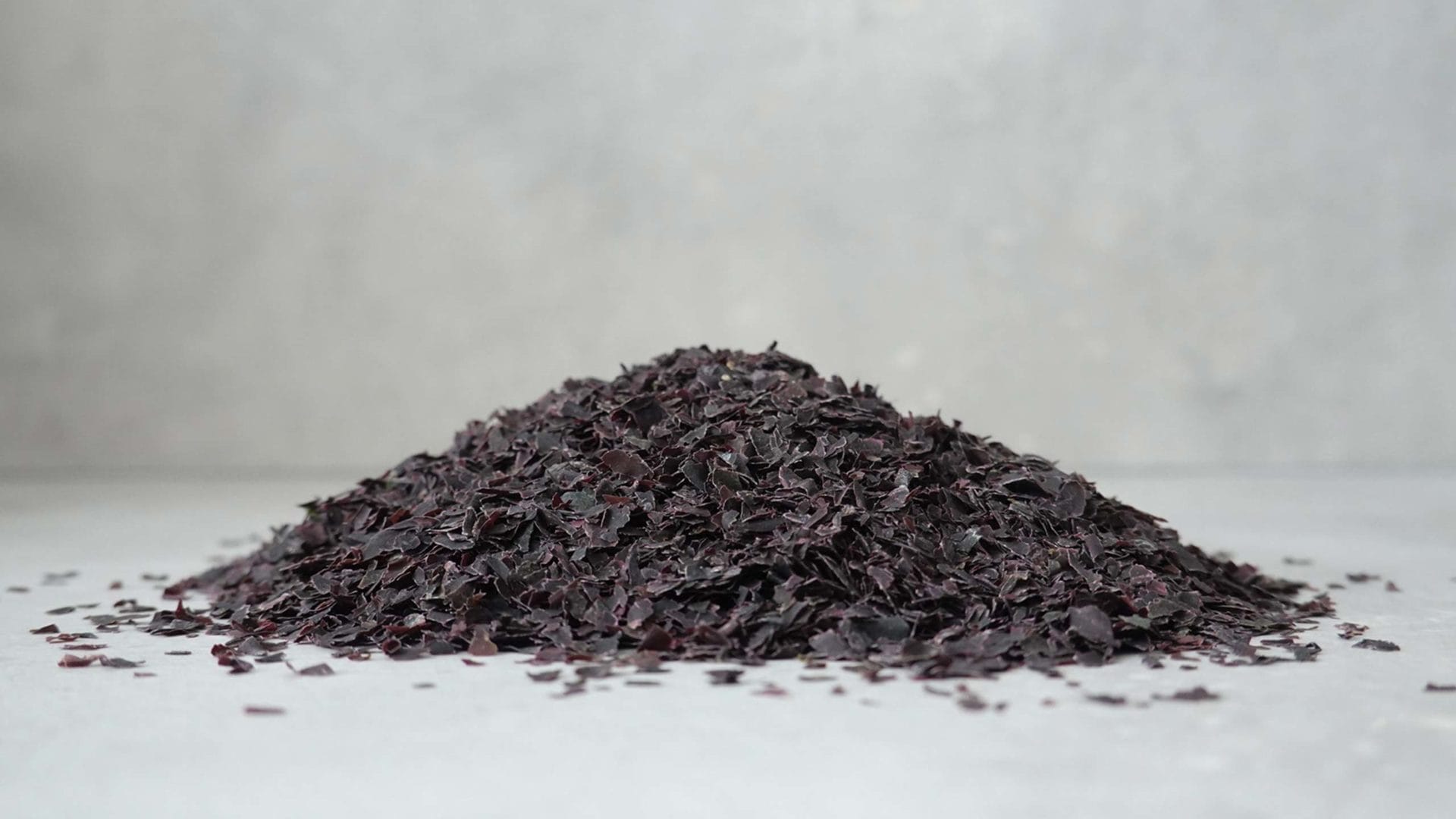
Dulse without leche
However, it is unlikely that we will soon all be happily eating algae and completely abandoning cherished habits. One of the most popular habits of many Europeans and Americans is bacon for breakfast. “Bacon makes everything better” was the life motto of our test cook, Can. The smell alone directly triggers an appetite for something hearty for many.
At the same time, bacon represents an unhealthy, fatty and salty diet, not to mention criticism of meat consumption in general. Producers of a vegan bacon based on soy protein must have thought that it would be possible to combine both requirements, i.e. to produce healthy, sustainable bacon. Unfortunately, these products are not all convincing, partly because such substitutes are usually highly processed.
In recent years, there has been an increased search for natural substitutes, and the red alga dulse has attracted attention as “bacon from the sea”. We are also open to new approaches, because slowly changing old habits with new concepts could be a successful way, if the previous food culture is respected in the process. But this can only succeed if the new concepts convincingly tie in with the familiar. In short, does the algae taste bacon-y enough to replace the original? We’ve read and heard a lot about it, and now we want to smell and taste for ourselves how an alga can turn us into bacon vegans in no time.
Scrambled eggs with bacon algae
Dulse comes from the coastal waters of the Atlantic and Pacific, its appearance is somewhat reminiscent of red cabbage (which we like a lot). We soak the dried algae in water, the first taste test is rather sobering. The seaweed tastes strongly iodine, as seaweed tastes and has a firm bite. Unfortunately, so far not special and also not bacon. Frying will fix it – so off it goes into the pan. In order to retrieve familiar taste patterns, we combine the preparation with scrambled eggs, so we have classic scrambled eggs with bacon (- alga).
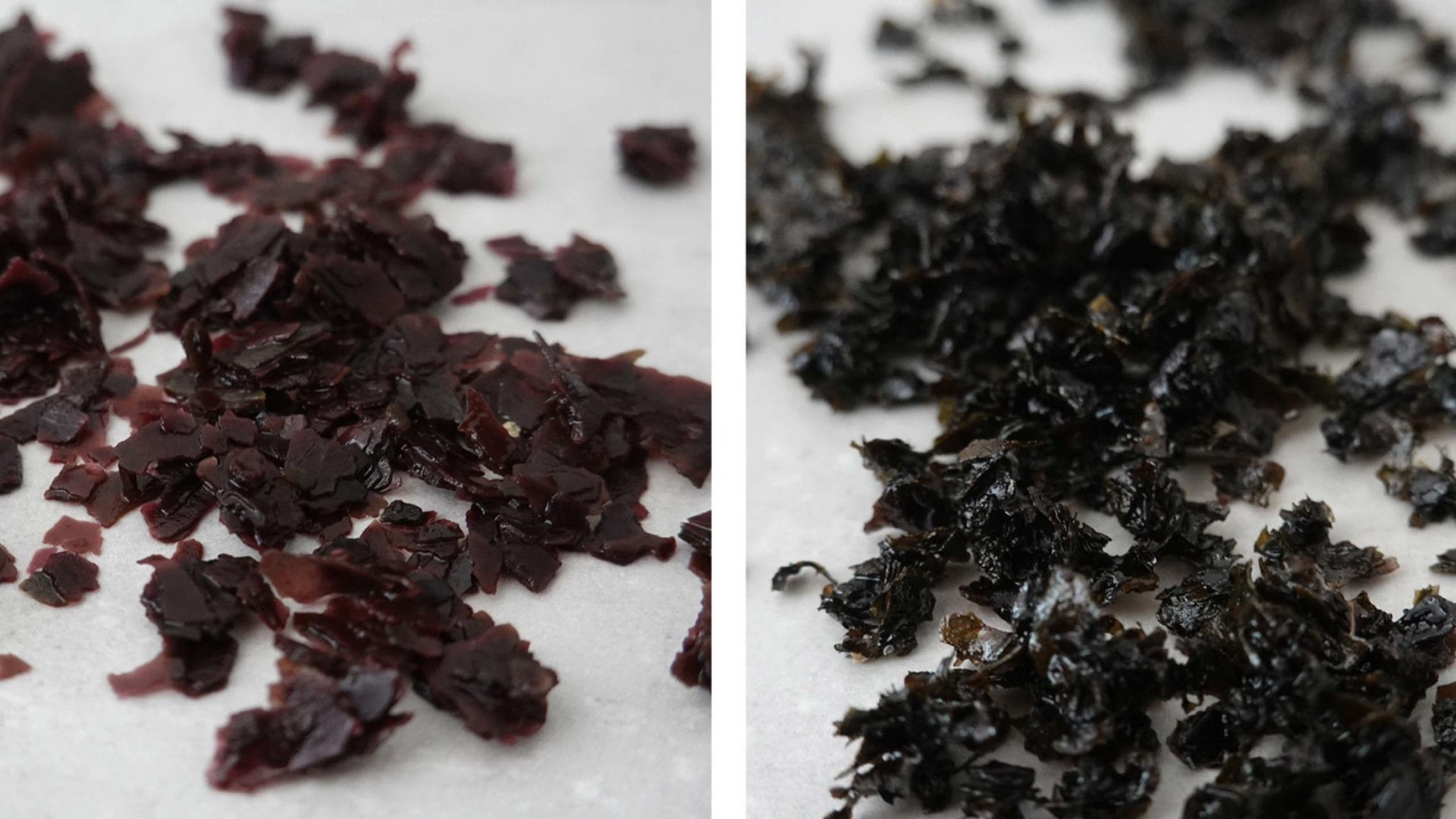
We fry the soaked seaweed flakes with a little oil, in the process the seaweed loses its reddish color and turns black. There is a somewhat strange, iodine-fishy smell in the air; there is even talk of the scent of a “hamburger port hole” that fills the entire Food Lab. Nevertheless, we add two eggs, our anticipation rises briefly, but it subsides very quickly. The taste test is once again very sobering. No flavor of bacon, just a good scrambled egg with seaweed!
Square, Practical…Dulse?
Unfortunately, the algae and we have not succeeded in squaring the circle. We therefore try to use dulse differently. Hmmm….Square the circle…square, practical: stock cube!
Stock cubes are among the first industrially produced foods. Justus von Liebig originally developed this successful product around 1880 on the basis of meat extract. Today, bouillon cubes are mostly vegetarian and the first meat-free variant was launched as early as 1909. At the time, however, that had more to do with the price of ingredients than the demand for meatless alternatives. Most recently, a related product, produced explicitly as a bacon variant and introduced even before the bouillon cube (1867), was withdrawn from the market – pea sausage. The days of needing iron reserves seemed to be over in December 2018….
However, glutamate is often used for such flavor enhancers. With the alga can create a cube without further addition of flavor enhancers. (Glutamate was originally derived from seaweed, traditionally used in a dashi).
We use the iodine fishy flavor to develop a stock cube for vegetarian fish stock. A fish stock cube is somewhat more unusual in Germany than in Mediterranean countries, for example.
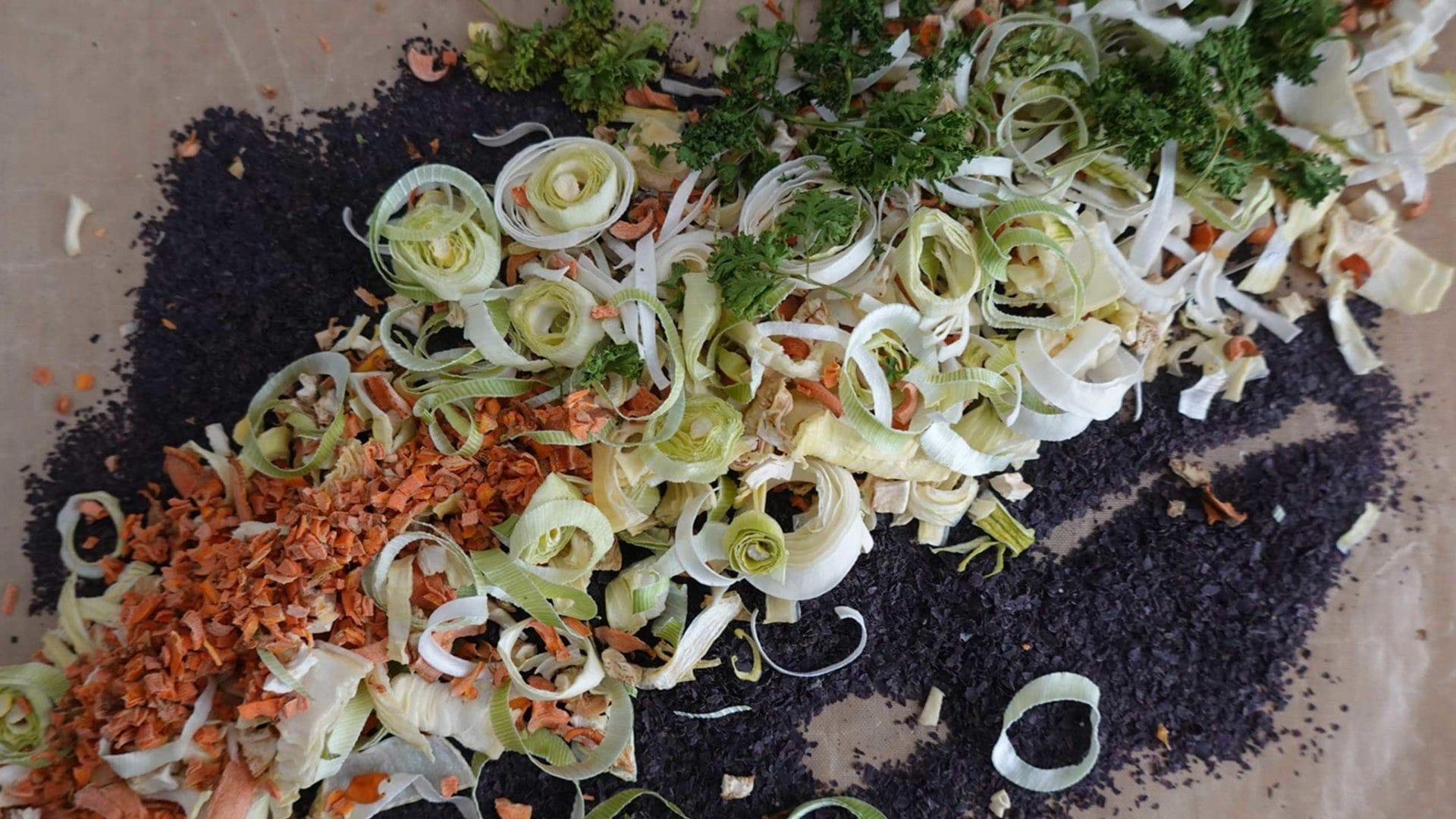
To get everything into a small concentrated cube, we cut soup greens – carrots, celery, onion, leek, parsley – into pieces and dry the vegetables in the dehydrator oven. As with our vegetable muesli, we remove water from the vegetables. This process takes about 9-10 hours. After the vegetables are completely dried, we mortar them only slightly but not completely to powder, because we want to keep the structure. We add the dulse seaweed in the soaked and fried version. To give the concentrated mass a light binding, we use albumin (protein powder) and xanthan gum (obtained by fermentation of corn starch and with the help of a type of bacteria that causes diseases in cabbage vegetables, among others), the powders gelatinize our highly concentrated vegetables and the algae.
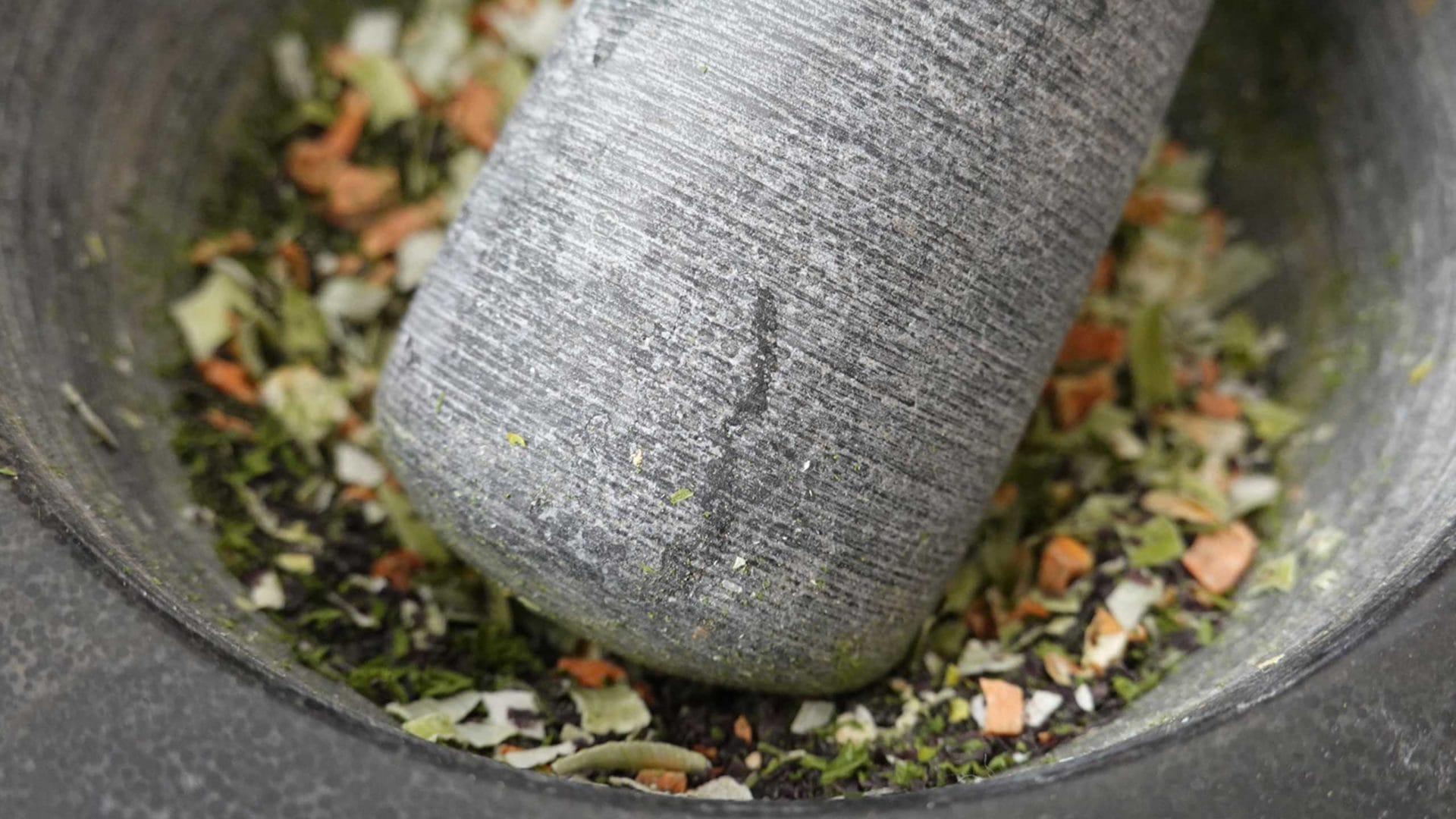
We salt the mass a little, put it in a vacuum bag and vacuum it so that the mass is tightly pressed together. Using a rolling pin, we roll out the mixture evenly, then freeze the bag for 5-6 hours. After that, our seasoning paste can be accurately cut into cubes with a bread knife. We place the finished cut cubes on a grid and dry them completely in the drying oven again. Our stock cube can be boiled with 150ml of water to make an algae-based “fish stock”. This does not taste bad, but could be more intense, after all, we have not added glutamate. Our embarrassment cube could certainly be improved by a mixture of different algae with higher proportions of glutamic acid.
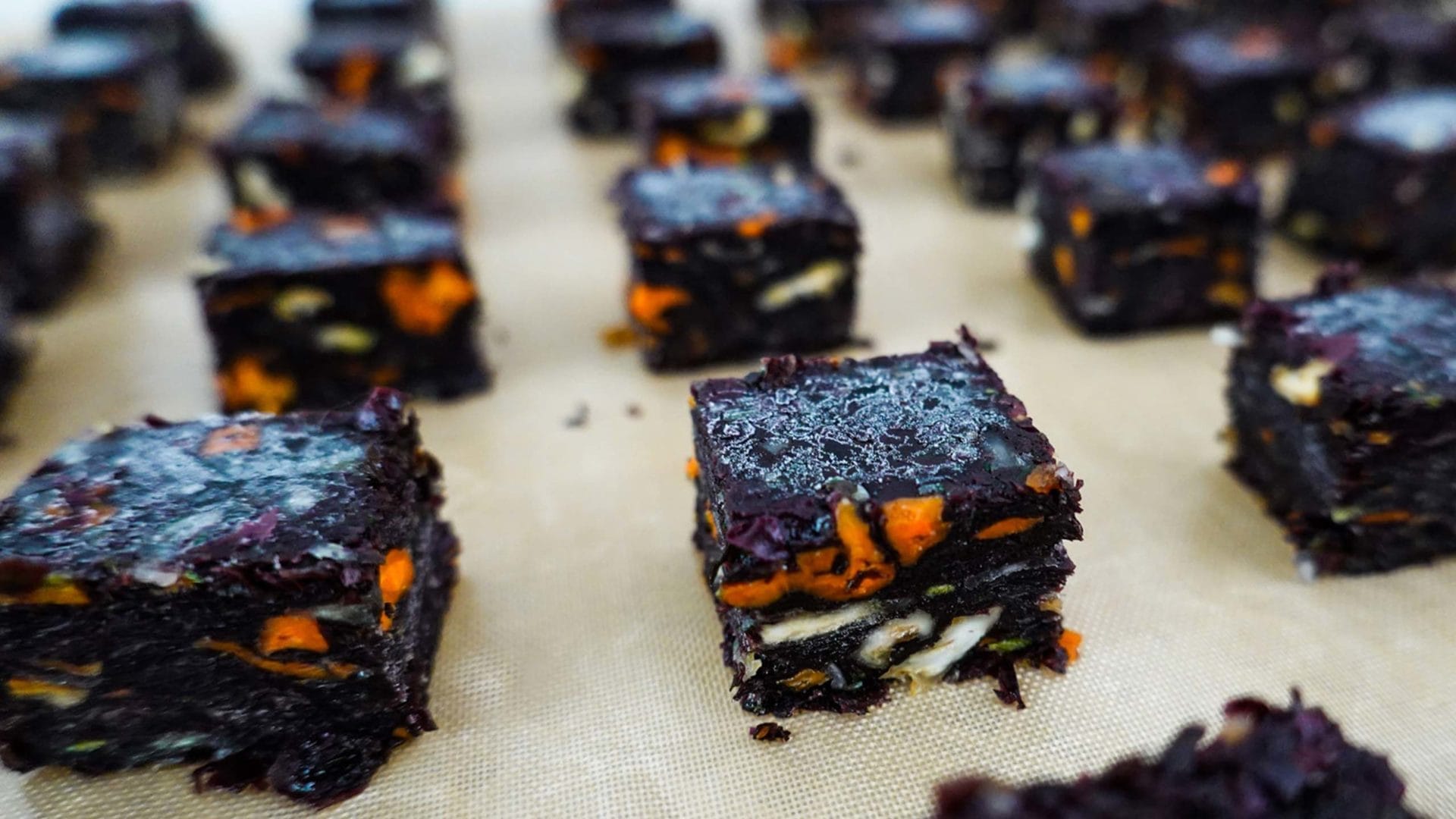
We remain open to different flavors and products. Bacon continues to be part of the mix every now and then for now, but we’re sure to discover many more compelling plant-based sources of good flavor.
